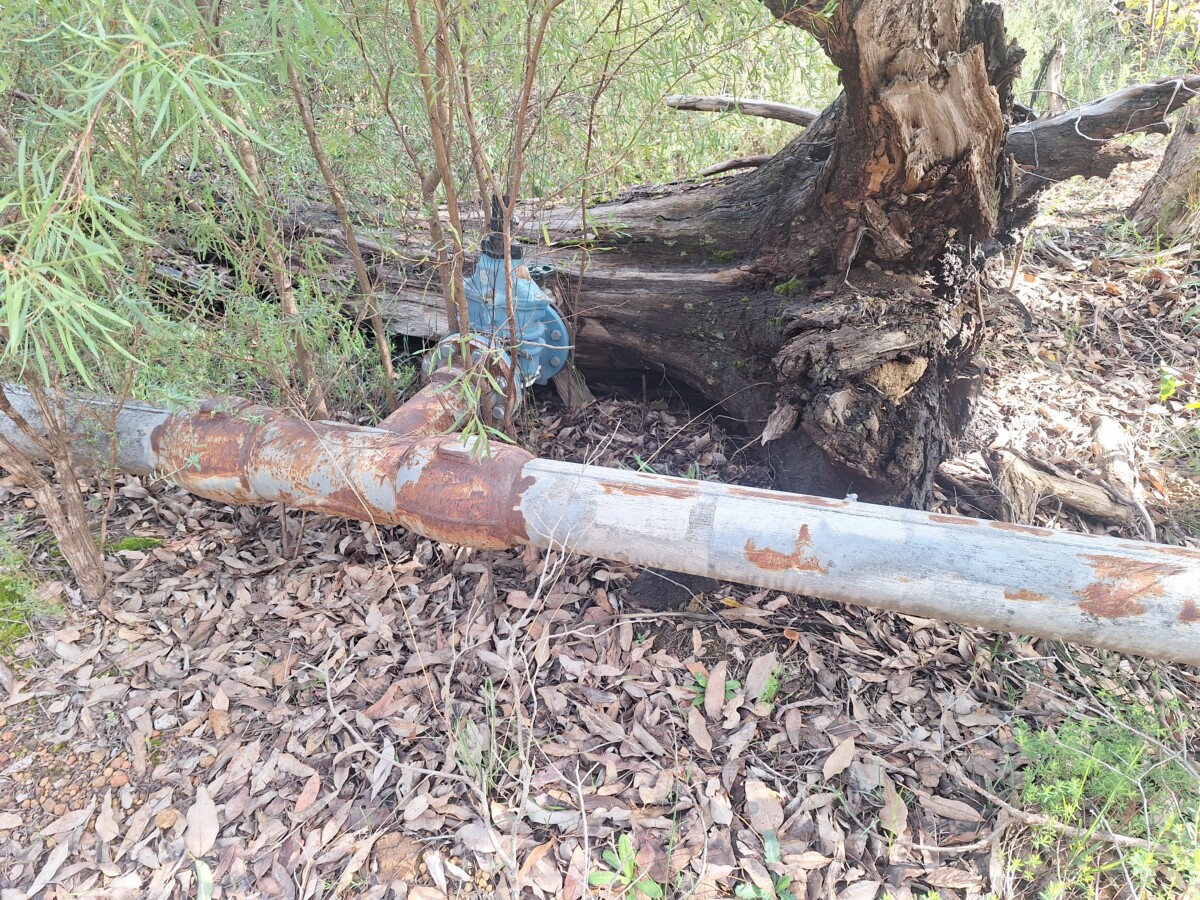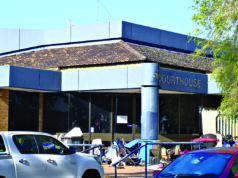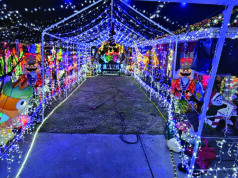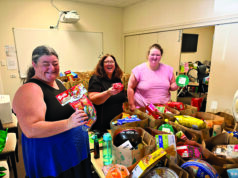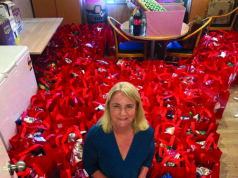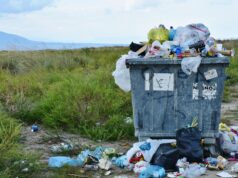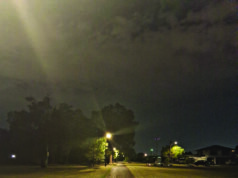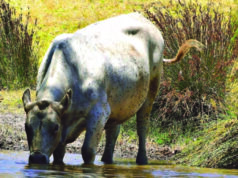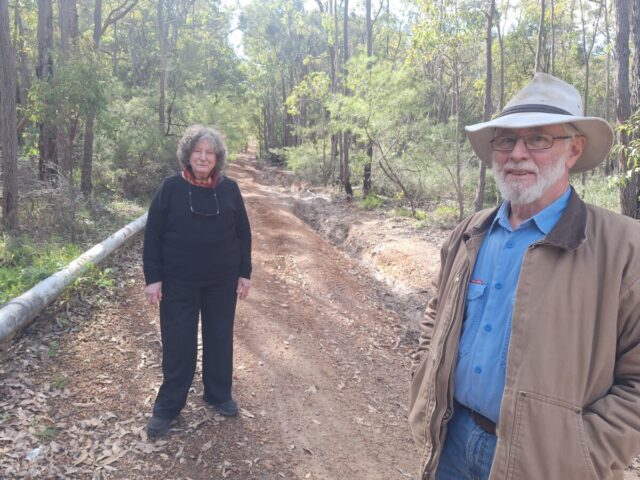
After Australia experienced its worst bushfire season on record in 2019/20, a small group of concerned Jarrahdale citizens came together with the aim of making the town’s infrastructure more resilient in an emergency.
The group named itself Jarrahdale’s Future, and identified bushfires as the main threat to the community.
According to council, 97 percent of the Shire of Serpentine Jarrahdale is bushfire-prone – that is, at risk of bushfire attack.
Data released three years ago by consultancy group Risk Frontiers put the community of Jarrahdale in the Top 20 hot spots in Perth potential loss of homes in a bushfire.
“It was quite obvious to us that if there was an intense fire, there’d be trouble,” group member Penny Muecke said.
The small dedicated team put their sights on bolstering and clearing around the council-owned communications tower as their first major goal.
The shire was obliging with their requests and they quickly chalked up a win for community and cause.
The second piece of infrastructure they marked as an item of concern is the three-kilometre stretch of 55-year-old pipeline that supplies the town with water.
The pipeline is serviced by Water Corporation. Water is pumped from the main Serpentine Dam water supply into three tanks on top of the hill, which is then gravity-fed into homes.
The issues they identified included the quite severe erosion of the maintenance track that runs along the length of the pipe; the alarming proximity of large trees and scrub to the pipeline; the obvious surface corrosion to numerous sections of the pipe; and the uncertainty of how the system operates in a power outage.
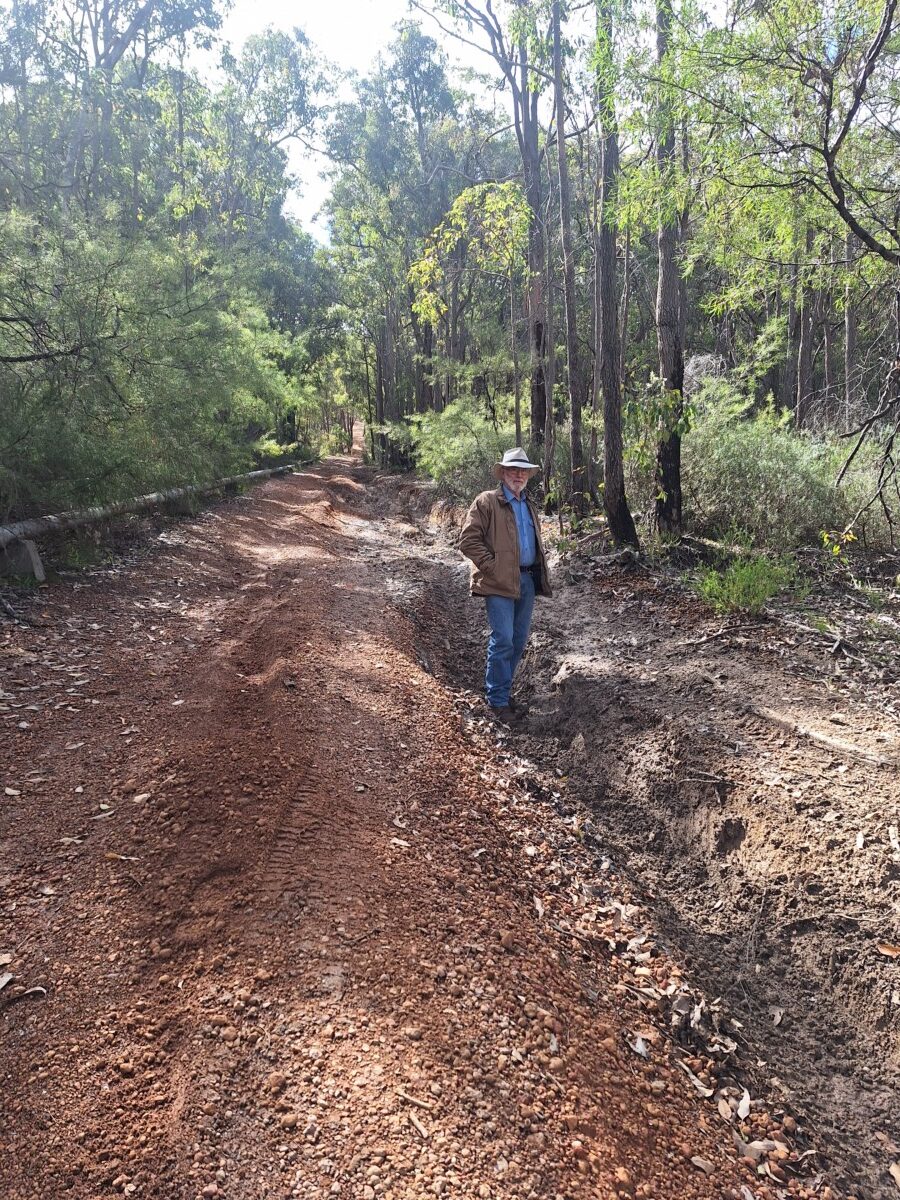
There is a back-up generator attached to the pumping station, but there are also unconfirmed local anecdotes that the water in the tanks almost ran dry during a recent pole-top fire.
“If the pump is inoperable, we don’t have water,” group member Rick Giles said.
“Imagine the effect on a population if the water supply runs out just as they’re preparing to evacuate – it could incite a panic.”
“Should trees fall across the pipeline in a fire it would destroy it. And it would take days for them to be able to repair it. Some parts of the track are currently impassable.”
There are also concerns about the visible surface corrosion along the pipe and the number of repaired leaks.
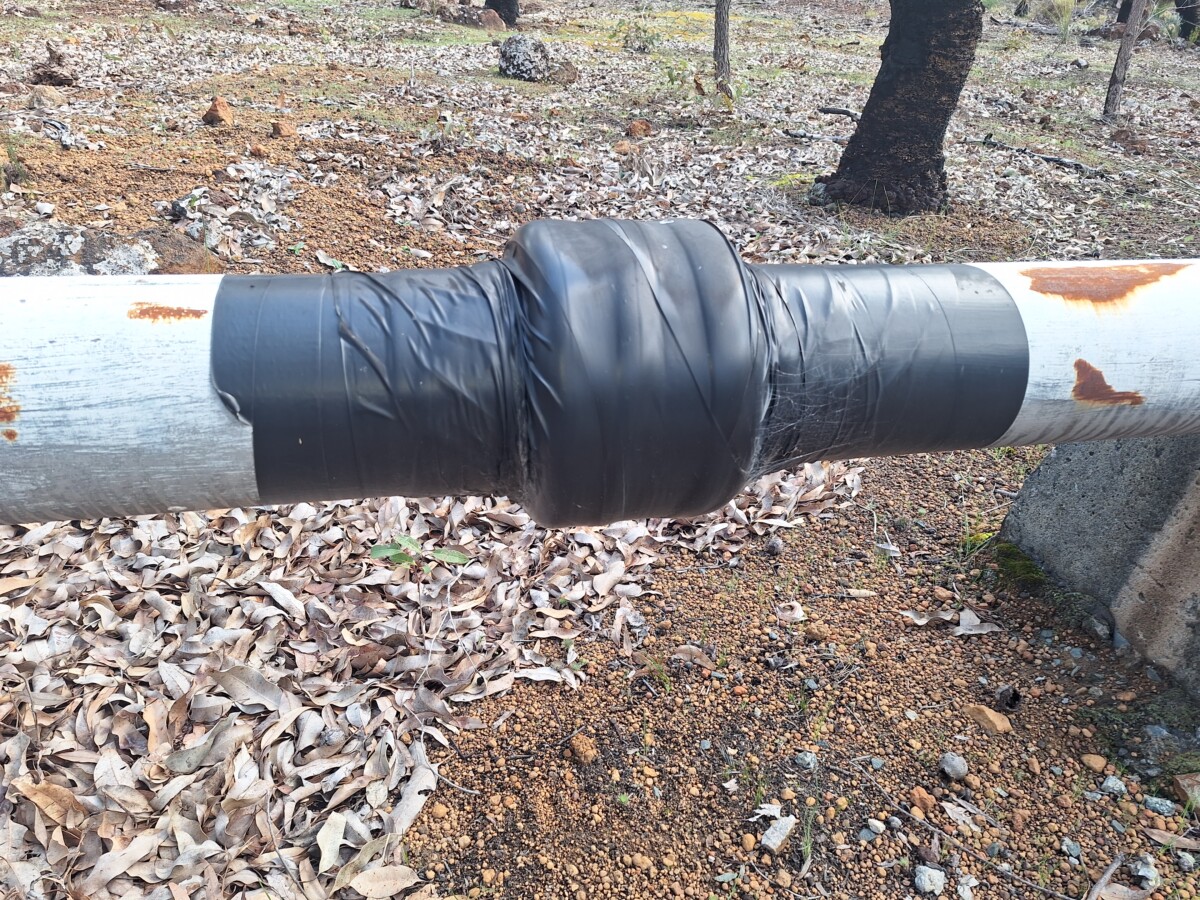
“The Jarrahdale water supply was built in 1968. By 1979, corrosion in the main pipeline, particularly at the joints, was becoming an issue, and an engineer was called in to identify the problem and find a solution. In his report the engineer said he had no definite explanation for the corrosion – substandard material or very acid water could be the problem. The only remedy was to weld sleeves over the problem joints.” Ms Muecke said.

The group recently counted approximately 130 repaired leaks, which equates to roughly four times the acceptable leak and burst rate measure put in the Auditor General’s 2014 report on Water Corporation’s management of water pipes.
Jarrahdale’s Future has contacted Water Corporation on a quest for information to better arm the town. But they say they haven’t gotten very far.
“Here we are trying to do the right thing for this community but we keep coming up against resistance at every turn,” Mr Giles said.
Examiner Newspapers contacted Water Corporation with the group’s concerns and were told that the pipeline is “well within its life expectancy”.
“It continues to operate as designed, and is maintained and upgraded, as required, including the generator,” a spokesperson from Water Corporation said.
They argued that the company cannot be expected to guarantee a supply of water during a bushfire.
“No mains water supply network in the world is designed for firefighting. During a bushfire, heat and fire can damage water infrastructure, power outages can affect equipment and systems, and high demand can quickly empty water supply tanks. For this reason, we cannot guarantee mains water supply and pressure in the event of a bushfire,” the spokesperson said.
“The Shire of Serpentine-Jarrahdale is responsible for the preparation, mitigation and recovery from the impacts of bushfires in the area.”
The spokesperson also pointed to advice from the Department of Fire and Emergency Services that people in bushfire-prone zones should have an independent water supply ability to pump if they choose to stay and defend their home.
Penny Muecke accepts that Water Corporation cannot prevent every fault to its system during an emergency.
“While continuous water supply cannot be guaranteed, this does not absolve a utility of all responsibility,” she said making reference to the case surrounding Western Power’s duty of care in the Parkerville blaze.
“On the face of it, studying this case, it may be that the Water Corporation owes its customers a duty of care,” she said.
“Jarrahdale Locality 6124 has approximately 1700 residents many of whom are on the Jarrahdale Water Supply and many of whom are retired or elderly, and who would have limited capacity to recover from a catastrophic event made worse by failure of the water supply. We consider the Water Corporation to be in the same position as Western Power.”
In a small win for the group Water Corporation has said they “are progressing a plan to reduce the impact of the trees on the pipeline”.
